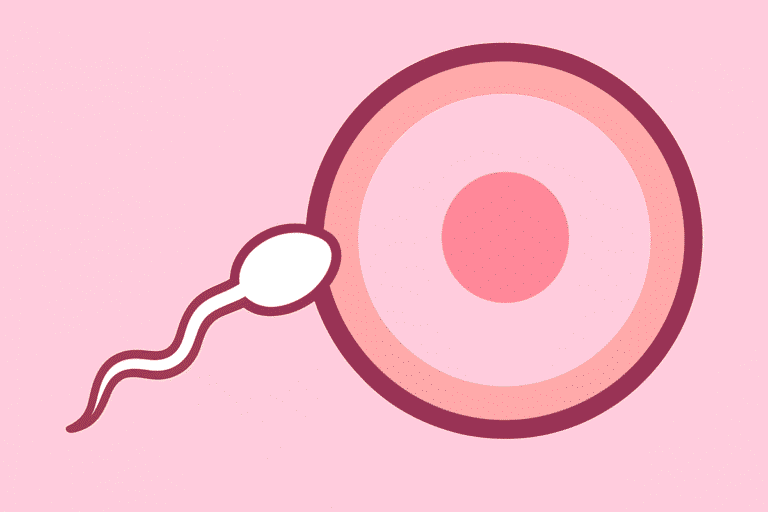It’s very typical to notice a difference in your vaginal discharge, especially a white one, before your period starts. It’s easy to feel a little worried. Are these typical signs or signs that something is wrong? Don’t worry; in most situations, having white discharge in the days leading up to your period is a normal and healthy aspect of your monthly cycle. Your body is a complex system that constantly delivers messages, and vaginal discharge is one of the most important ones.
You can take responsibility for your reproductive health with confidence. If you know what normal white discharge before your period looks like, and what signs can mean something is wrong. This in-depth explanation provides a detailed examination of the science underlying discharge before your period, covering its purpose, how it can change, and what different appearances might signify. It separates common myths from important medical facts to provide you with clear, helpful information.
What Exactly is Vaginal Discharge?
Glands inside your vagina and cervix make vaginal discharge, which is an entirely normal and necessary fluid. It’s like your body’s own way of cleaning itself and keeping itself safe. This fluid does a lot of essential things. It keeps the vaginal tissues moist and healthy, gets rid of dead cells and bacteria to stop infections, maintains the delicate acidic pH balance that is so important for keeping harmful germs away, and even gives you hints about when you can get pregnant.
The amount, color, consistency, and composition of your discharge change significantly during your menstrual cycle due to hormonal fluctuations, primarily estrogen and progesterone. These hormonal changes cause modifications that either help sperm move during ovulation or make a protective barrier at other times. This means that seeing things like white creamy discharge before your period is typically just your body doing what it naturally does.
Why White Discharge Before Period Happens
To truly understand why white discharge before your period is so standard? We need to take a brief look at the hormonal dance that occurs during the menstrual cycle. Progesterone becomes the primary hormone after ovulation, which is when an egg is produced. This rise in progesterone levels has a clear influence on your cervical mucus, the primary component of vaginal discharge. Progesterone makes the mucus thicker, cloudier, and less stretchy than the clear, slippery, egg-white-like discharge that is usual around ovulation. Its job changes from helping sperm get through to making a thicker, more protective plug at the cervix’s entrance.
This thicker barrier works as a natural shield, making it more challenging for germs or other potential intruders to enter the uterus at this time. So, having a white discharge before your period, which is often called “white creamy discharge before period” or “thick white discharge before period,” is a direct response of your body to rising progesterone levels. This prepares your reproductive system for either a possible pregnancy or the start of your period.
Characteristics of Healthy White Discharge Before Period
So, what does “normal discharge before period” look and feel like? Usually, this white discharge before your period has certain signs that show everything is working as it should:
- Color: It might be transparent, milky white, or even a very pale, creamy off-white. A bright, blinding white might also be typical.
- Consistency: This is where the phrases “thick white discharge before period” or “white creamy discharge before period” come into play. It is usually thicker, like lotion, or even a little sticky, and it doesn’t stretch like ovulation discharge does. You may notice that it forms little clumps or appears thicker.
- Amount: The amount may vary significantly from one individual to the next and even from one cycle to the next. Some people detect a slight increase, while others notice a more significant volume change. It shouldn’t be so heavy that it quickly soaks through underpants, like when you have a lot of blood.
- Smell: Healthy pre-period discharge usually doesn’t have a noticeable odor, or it has a very mild, slightly musky scent that is neither strong nor unpleasant. It shouldn’t have a bad smell, like fish, yeast, or moldy bread.
- Sensation: It shouldn’t cause the vaginal or vulvar area to become itchy, painful, red, or hot. It’s normal to have a slight dampness, but not to feel pain.
This thicker white discharge before your menstruation usually shows up 1 to 2 weeks after ovulation and can last until your period starts. It’s your body’s way of expressing that the progesterone phase is in full swing.
Signs of Abnormal Discharge Before Period
It’s common to have white discharge before your period, but if it changes in any way, it could mean that you have an infection or an imbalance. You need to pay attention to more than just the hue. If you notice any of these indicators before your period, especially if they are different from what you usually see, be on the lookout:
- Pronounced Changes in Color: Discharge that is yellow, green, dark yellow, or grayish instead of white or clear/off-white.
- Altered Consistency: Chunky Discharge (like cottage cheese), foamy, frothy, or too watery (like urine leakage) when it is usually thicker.
- Strong, Unpleasant Odor: A strong fishy scent (particularly after sex), a bad or rotting smell, or a strong yeasty/bread-like smell are all signs that something is wrong. A slight smell is usually acceptable, but a strong, unpleasant odor is not.
- Itching and Irritation: A lot of itching (pruritus) inside the vagina or around the vulva (the outer genital area) is a relatively typical sign of infections, such as yeast.
- Burning Sensation: A burning feeling in the vaginal area or when you pee (dysuria).
- Pain or Discomfort: This includes discomfort during sex (dyspareunia), pelvic pain, or overall soreness.
- Redness and Swelling: The vulva or vaginal opening may look red or swollen.
- Unusual Bleeding: Spotting or bleeding between periods, especially if it’s not normal for you.
If you experience white discharge before your period, along with any of these symptoms, itching, burning, a foul smell, an unusual color, or pain, it’s likely that something other than regular hormonal changes is occurring. You should consider consulting a doctor.
Also Read: Learn About Menopause Stages
Common Culprits Behind Abnormal White Discharge
Several illnesses might cause abnormal white discharge before your period and make you feel uncomfortable. Knowing them can help you find possible problems:
- Yeast Infection (Vulvovaginal Candidiasis): This is one of the most common reasons for discharge that is difficult to manage. A yeast infection usually shows up with:
- Discharge: Thick, white, clumpy discharge that looks like cottage cheese. This is the typical “yeast infection discharge.”
- Symptoms: Symptoms include severe itching, redness, swelling, pain, and even burning in the vagina or vulva during urination or sex. Yeast is always present, but when it grows excessively, it causes problems. It can happen because of things like antibiotics, excessive estrogen (from pregnancy or birth control), diabetes, or a weak immune system.
- Bacterial Vaginosis (BV): This happens when there are more bad bacteria than healthy bacteria in the vagina’s natural bacterial ecology. The discharge from BV is often:
- Discharge: There may be thin, white, gray, or even yellowish discharge. A strong, bad “fishy” smell, especially after sex, is one of the most important signs.
- Symptoms: The smell is usually the most noticeable sign. You may feel itchy or experience burning, although these symptoms are less common than those associated with a yeast infection. Many women with BV have more discharge before their period because changes in hormones might affect pH.
- Sexually Transmitted Infections (STIs): Some STIs might make your discharge look strange:
- Trichomoniasis (“Trich”): Trichomoniasis, or “Trich,” is a parasitic infection that typically causes a thick, yellow-green, or gray discharge with a foul odor. Itching, burning, redness, and pain when you pee or have sex are common.
- Chlamydia and Gonorrhea: These bacterial infections can occasionally cause more discharge that is yellow or hazy, as well as pelvic pain, bleeding between periods, or pain when urinating or having sex. However, they are generally asymptomatic. They need to be treated very carefully to avoid significant problems like PID (Pelvic Inflammatory Disease).
- Other Potential Causes: Changes in discharge and pain can also happen when soaps, douches, spermicides, or laundry detergents irritate the vagina, when the cervix becomes inflamed (cervicitis), or when certain skin disorders are present. Hormonal changes that go beyond the regular cycle changes, such as those that happen during perimenopause or with thyroid problems, can also sometimes change the way you discharge.
Maintaining Optimal Vaginal Health: Proactive Tips
To keep problems from happening, you should promote a healthy environment in your vagina:
- Gentle Cleansing is Key: Use warm water to wash only the exterior of the vulva. If you need to use soap, use a mild, fragrance-free, and hypoallergenic bar or wash. Do not ever douche. Douching disrupts the normal pH balance and kills beneficial bacteria, making you more susceptible to illness.
- Wipe Wisely: After using the toilet, always wipe from front to back, from the vagina to the anus. This will prevent bacteria from the rectum from entering the vagina.
- Breathable Underwear: Pick cotton underwear. Cotton allows air to move, which prevents moisture from building up and allows yeast or germs to grow. Avoid wearing tight-fitting synthetic underwear or pants for extended periods.
- Change Out of Damp Clothes Promptly: Remove your wet swimsuit or sweaty workout clothes as soon as possible.
- Practice Safe Sex: Use condoms every time and in the right way to lower your risk of getting STIs, which are a common cause of irregular discharge. Talk freely with your partner about your sexual health.
- Consider Probiotics: Some studies suggest that taking probiotics by mouth or vagina that contain Lactobacillus strains may help keep the vaginal flora healthy, but further research is needed. Talk to your doctor.
- Listen to Your Body: Monitor how your discharge typically changes during your menstrual cycle. If you know your baseline, it’s easier to see changes that worry you.
Conclusion: Demystifying White Discharge Before Your Period
Seeing white discharge before your period is usually an indication that your body is functioning correctly due to the presence of progesterone. This thick, white discharge or creamy white discharge before your period is significant for maintaining your reproductive health. You can tell it’s a good indication if you know what to look for: it’s milky white, thick or creamy, has a moderate or no odor, and doesn’t cause discomfort. However, it’s crucial to be vigilant for changes such as unusual colors (yellow, green, gray), strong odors (fishy, foul), altered textures (chunky, frothy), or other symptoms (itching, burning, discomfort).
These changes could mean that you have an infection, like yeast or BV, or, less often, an STI, and you should see a doctor. You can deal with changes in discharge before your period with confidence and make sure your reproductive health stays healthy by listening to your body’s natural cycles, keeping your vagina clean, and getting expert help when you need it. Your vaginal health is a crucial component of your overall well-being, and understanding how to recognize its signs gives you control over it.





[…] Also read: Is White Discharge Before Your Period Normal? An Ultimate Guide […]